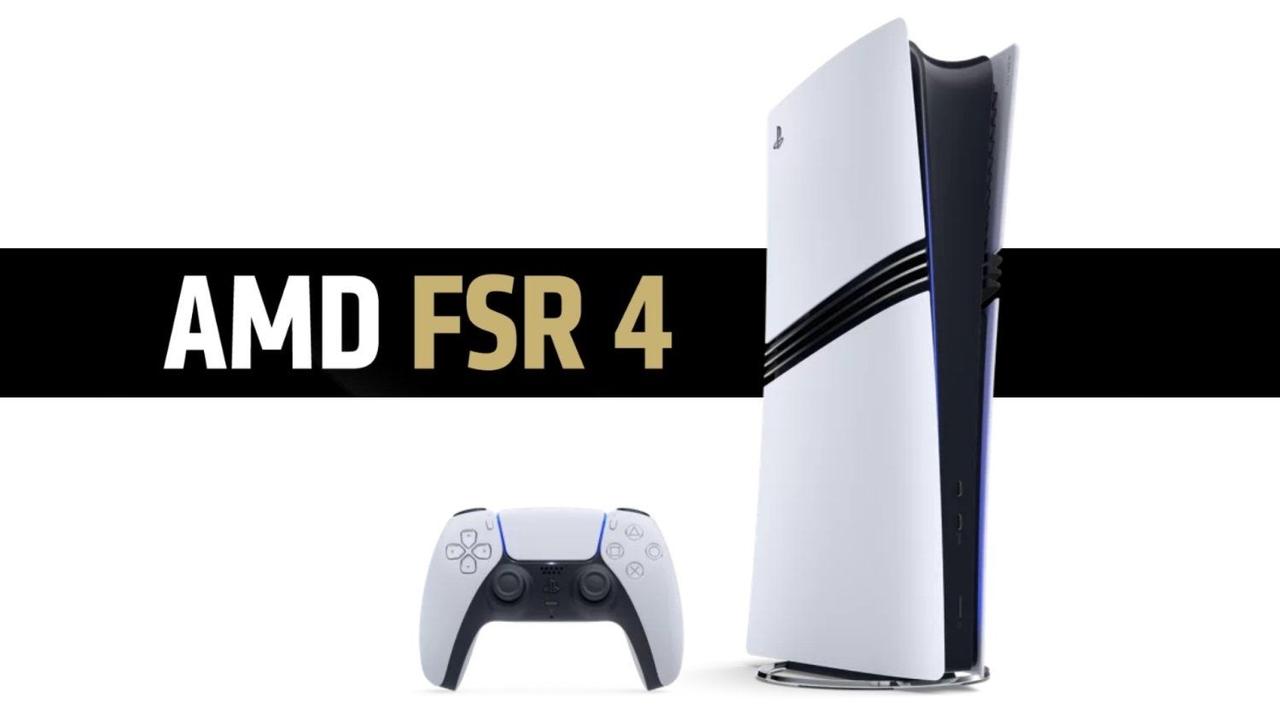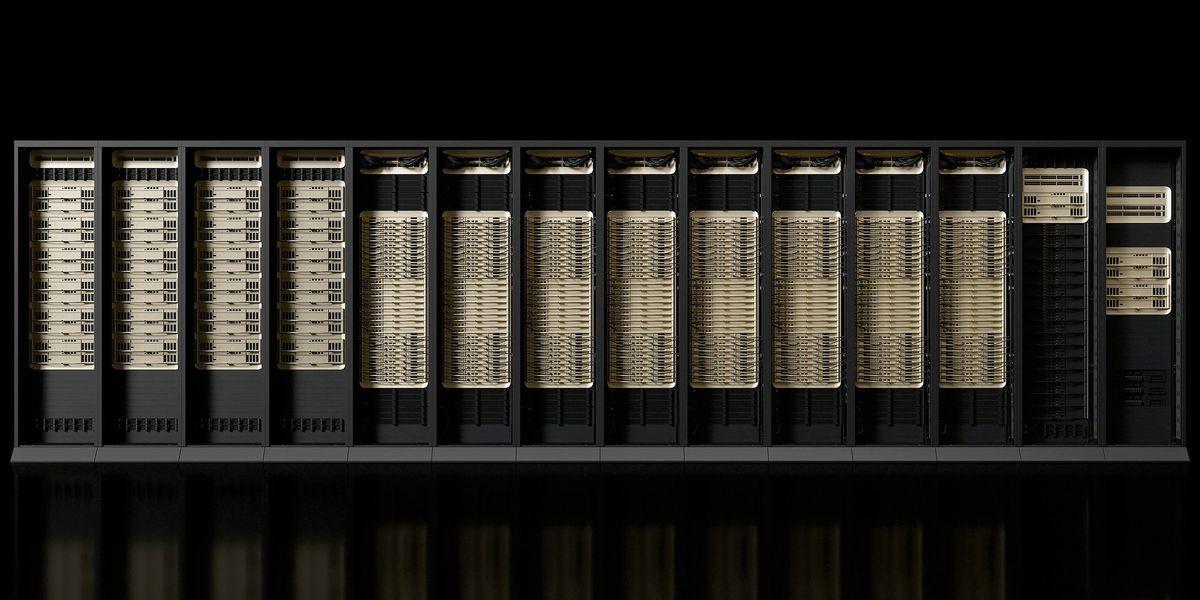AMD's FidelityFX Super Resolution 4 Set to Power PlayStation 5 Pro's Advanced Upscaling
2 Sources
2 Sources
[1]
AMD FidelityFX Super Resolution 4 Powers PS5 Pro Upscaling
Sony is preparing a significant graphics upgrade for the PlayStation 5 Pro that will arrive sometime in 2026. The update focuses on a new upscaling algorithm designed to boost both framerate and image quality on the PS5 Pro. This new technology will replace the current PlayStation Spectral Super Resolution (PSSR) system, which is used to improve graphics by intelligently increasing the resolution of game images without requiring a full hardware refresh. However, this upgrade won't be available on the base PS5 because its hardware can't support the more advanced processing required. The new upscaling tech is the product of a collaboration called Project Amethyst, which started in 2023 between Sony and AMD. The project aims to advance real-time graphics by developing better machine learning models and convolutional neural networks, or CNNs, that help boost the detail and smoothness of images in games. The work done through this partnership has already been integrated into AMD's FidelityFX Super Resolution 4 (FSR 4), an upscaling technology available to PC users with compatible AMD graphics cards. Importantly, this technology is not proprietary to Sony -- AMD offers it openly to their customers. Mark Cerny, the lead architect for the PS5, has been directly involved in the project, which shows how closely Sony and AMD are working together. They have teams spread out across different continents, including Asia, Europe, and North America, meeting regularly to share results and improve the algorithm. This kind of collaboration has sped up progress, allowing them to achieve in about nine months what might have otherwise taken years. The cooperation also includes setting up dedicated quality assurance teams to ensure that each new version of the upscaling algorithm truly offers better performance than the previous one, something Sony hadn't done internally before. One interesting outcome of Project Amethyst is how it benefits both console and PC gaming. The improvements made on the PS5 Pro side are also influencing AMD's next-generation RDNA graphics architecture, which will power upcoming PC graphics cards. So, the knowledge and technology developed here don't just stay inside Sony's console ecosystem -- they feed back into AMD's broader hardware development. This means that gamers on both platforms can expect better graphics and performance thanks to this partnership. Looking ahead, the replacement for PSSR on the PS5 Pro is expected to be a "drop-in" upgrade, meaning it should be straightforward for game developers to adopt and for users to receive without major system changes. The focus is on delivering higher frame rates and improved image clarity without the need for new hardware. This is particularly important for the PS5 Pro since it aims to extend the console's lifespan and competitiveness through software advancements rather than constant hardware revisions. It's worth noting that while technologies like Nvidia's DLSS (Deep Learning Super Sampling) have been well-known in the upscaling space, AMD's FSR 4 has gained attention as a competitive alternative, partly due to the work done with Sony. Some industry observers consider FSR 4 to be close to DLSS in quality, which highlights how the collaboration is helping AMD improve its offerings. For instance, reviewers have noted how FSR 4 performs well on mid-range AMD graphics cards, improving game visuals and performance in titles like Call of Duty. From a user perspective, this means PS5 Pro owners will soon benefit from better gaming experiences without waiting for a completely new console. The upcoming PSSR replacement will allow games to run smoother and look better by using advanced AI-driven upscaling techniques. This approach helps balance the demand for high-quality graphics with the limitations of current hardware. Mark Cerny's involvement also signals how important these machine learning techniques have become for modern console design. Rather than just focusing on raw processing power, companies are investing heavily in software-level enhancements that extract more value from existing hardware. This also aligns with trends in PC gaming, where AI and machine learning are increasingly used to enhance real-time graphics. Source: Tom's Guide
[2]
AMD's FSR 4 upscaling is coming to PlayStation 5 Pro next year
As an Amazon Associate, we earn from qualifying purchases. TweakTown may also earn commissions from other affiliate partners at no extra cost to you. AMD introduced AMD FidelityFX Super Resolution 4, or FSR 4, with its latest generation of Radeon RX 9000 Series GPUs. Currently exclusive to the company's new RDNA 4 architecture on PC, it leverages new powerful AI hardware integrated into the latest Radeon graphics cards to deliver AI-powered Super Resolution that is exponentially more impressive than previous non-AI versions of FSR. As we highlighted in our review of AMD's new flagship Radeon RX 9070 XT desktop graphics card, FSR 4 image quality brings the technology so close to NVIDIA's DLSS that it's now a feature you should always enable when gaming in 1440p or 4K to receive a free performance boost. As part of a new interview with Tom's Guide, PlayStation architect Mark Cerny has confirmed that FSR 4 will arrive on the PlayStation 5 Pro sometime in 2026. AMD co-developed FSR 4 with Sony, and although the PS5 Pro's custom NPU or AI hardware isn't quite at the level of what you'd find in an RDNA 4 GPU, the version of FSR 4 headed to consoles will not be a cut-down version of the algorithm. This is fantastic news as it means that the current FP8-optimized version of FSR 4 is being optimized and updated to work with the PlayStation 5 Pro's NPU. This opens the door for FSR 4 support, or a version of it, to potentially be compatible with RDNA 3 GPUs, such as the Radeon RX 7000 Series, as well as the integrated RDNA 3.5 graphics and NPUs found on the latest Ryzen chips powering portable PC gaming handhelds. As FSR 4 is currently explicitly tuned for the latest Radeon RX 9000 Series GPUs, additional development work by AMD and Sony is the reason why FSR 4's PS5 debut is currently slated for 2026. The good news for developers is that they won't have to make any changes to their games or release new 'FSR 4 patches or updates' as Mark Cerny has also confirmed that FSR 4 on the PS5 Pro will be a drop-in replacement for the current PSSR upscaler.
Share
Share
Copy Link
Sony and AMD collaborate on Project Amethyst to bring FSR 4, an AI-powered upscaling technology, to the PS5 Pro in 2026, promising significant improvements in graphics and performance.
AMD and Sony Collaborate on Next-Gen Upscaling Technology
In a significant development for the gaming industry, AMD's FidelityFX Super Resolution 4 (FSR 4) is set to power the PlayStation 5 Pro's upscaling capabilities. This collaboration, known as Project Amethyst, aims to deliver a substantial graphics upgrade for Sony's next-generation console, expected to arrive in 2026
1
2
.The Technology Behind FSR 4

Source: Guru3D
FSR 4 is an AI-powered upscaling technology that leverages machine learning models and convolutional neural networks (CNNs) to enhance image quality and boost frame rates in real-time graphics
1
. This advanced algorithm is designed to replace the current PlayStation Spectral Super Resolution (PSSR) system, offering superior performance and visual fidelity.Project Amethyst: A Global Collaboration
Project Amethyst, initiated in 2023, brings together teams from Sony and AMD across Asia, Europe, and North America
1
. This international effort has accelerated development, achieving in months what might have taken years otherwise. Mark Cerny, the lead architect for the PS5, is directly involved, underscoring the project's importance to Sony1
.Impact on Console and PC Gaming
The collaboration's benefits extend beyond the PlayStation ecosystem. The advancements made through Project Amethyst are influencing AMD's next-generation RDNA graphics architecture, which will power future PC graphics cards
1
. This cross-pollination of technology ensures that both console and PC gamers will reap the rewards of improved graphics and performance.Implementation and Compatibility
FSR 4 on the PS5 Pro is expected to be a "drop-in" upgrade, making it easy for developers to adopt and for users to receive without major system changes
1
2
. Importantly, Mark Cerny has confirmed that developers won't need to release new patches or updates for their games to take advantage of FSR 4, as it will replace the current PSSR upscaler seamlessly2
.Related Stories
Competitive Landscape
While Nvidia's DLSS has been a dominant force in upscaling technology, AMD's FSR 4 is gaining recognition as a competitive alternative. Some industry observers consider FSR 4 to be close to DLSS in quality, particularly noting its performance on mid-range AMD graphics cards
1
.Future Implications

Source: TweakTown
The integration of FSR 4 into the PS5 Pro signifies a shift in console design philosophy. Rather than relying solely on hardware upgrades, companies are investing heavily in software-level enhancements to extract more value from existing hardware
1
. This approach aligns with broader trends in the gaming industry, where AI and machine learning are increasingly used to enhance real-time graphics.Potential for Wider Adoption
While currently exclusive to AMD's RDNA 4 architecture on PC, the optimization work being done for the PS5 Pro's custom NPU (Neural Processing Unit) opens the possibility for FSR 4 support on other platforms
2
. This could potentially include compatibility with RDNA 3 GPUs and integrated graphics in the latest Ryzen chips, expanding the technology's reach in the PC gaming market.As the gaming industry continues to evolve, the collaboration between AMD and Sony on FSR 4 represents a significant step forward in graphics technology. With its promise of improved performance and visual quality, gamers on both consoles and PCs can look forward to more immersive and stunning gaming experiences in the years to come.
References
Summarized by
Navi
Related Stories
Recent Highlights
1
X's Paywall Doesn't Stop Grok From Generating Nonconsensual Deepfakes and Explicit Images
Policy and Regulation

2
Nvidia Vera Rubin architecture slashes AI costs by 10x with advanced networking at its core
Technology

3
OpenAI launches ChatGPT Health to connect medical records to AI amid accuracy concerns
Technology








